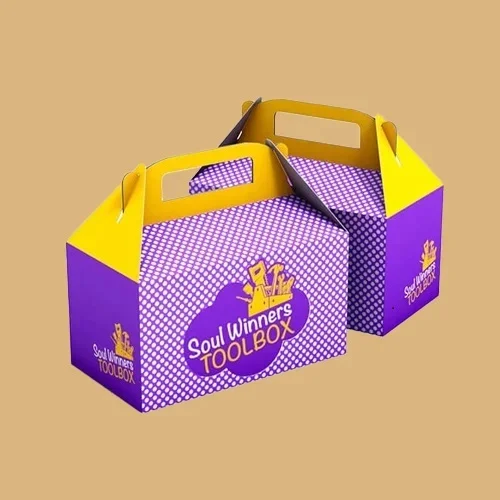
What Is A Pvc Bag? Uses, Benefits, And Packaging Alternatives
What's a PVC Bag? Uses, Benefits, and Packaging Alternatives
1. Introduction: Knowing about PVC Bags
Polyvinyl chloride (PVC) is a versatile synthetic plastic polymer that is commonly used in a variety of industries, one of which is packaging. PVC bags are the preferred choice due to their robustness, flexibility, and transparency, which makes them a great fit for numerous purposes starting from retail down to medical uses.
These bags are noted for their properties of being water-resistant and having the capability to stop chemicals from penetrating, which makes them the best for everything from the food industry to the electronic sector. At the same time, being flexible lets one design these bags as per the specific needs regarding size, thickness, and shape.
2. Composition and Properties of PVC Bags
The bags made from PVC are a dense synthetic resin that mainly relies on polyvinyl chloride (PVC). This is softened by the addition of plasticizers, which help to make it more flexible. Manufacturers are able to produce bags as rigid or as flexible as they want, according to the purpose of the bag.
The attributes of the material are such that they allow the bag to be see-through. This facilitates the consumer by giving them a sneak peek of the product, as it protects the product from various environmental elements. Therefore, these features have been instrumental in the growth in the usage of PVC bags in the different sectors.
3. The Applications of PVC Bags
PVC bags have been the first choice for a lot of people because of their durable and good looking nature in real market scenarios. Their use in the fashion industry is generally for accessories while in the hospitals and in most medical industries they are typically used as containers for the placement of sterilized equipment.
Displaying products is a practice that is commonly used by retailers and they really benefit a lot from the clear bags which nicely show the products and from the strength they come with. The bags are also used in food packaging to a great extent, because they are a guarantee of the barrier from the contaminants and at the same time the customer is able to see what is in there.
4. PVC Bag Benefits
One of the highlights when it comes to using PVC bags is the long life that they have. It is very difficult to break and be punctured along the road which is a good thing for safe storage and transportation of the product. They are moreover not affected by the fact that they are waterproof and hence the products stored in them are safe from moisture damage.
Even as PVC bags are such a good option in terms of low costs and the level of quality they offer, the fact that they are reusable means they also have a good economic value. Also, their lightweight nature means lower shipping charges so the total cost paid fits most budgets.
5. Going Green the PVC Bag Way
In some quarters, there are calls to regulate the use of PVC for the production and disposal of the plastic bags in light of the tremendous benefits they offer. PVC’s basically made from the stuff left over when you mess around with crude oil and natural gas, which, let’s be honest, already sounds kinda sketchy. The real kicker? When PVC breaks down—or gets dumped in a landfill—it spits out all sorts of toxic junk nobody wants floating around in the air or leaching into the ground. Now, the whole idea of recycling PVC bags? Not exactly a walk in the park. Turns out, once you start breaking them down, they release even more nasties—additives, toxins, the works—straight into the environment. Guess that explains why more and more people are getting fired up about finding better packaging options, ones that aren’t just low-key polluting everything like PVC loves to do.
Recycling PVC bags is problematic, primarily because additives and toxins are released into the air and soil during the recycling process. It is on this backdrop that people are demanding sustainable packaging alternatives that will not pose harm to the environment as PVC does.
6. Environmentally Friendly Substitutes for PVC Bags
In addressing these concerns, some sustainable alternatives to PVC bags have been identified. The materials mentioned, Kraft paper, glassine, and biodegradable plastics, perform the same role as the PVC bags but are more environmentally friendly. Eco Enclose
Most of these substitutions are also compostable or recyclable which also means they do not cause so much damage to the delicate ecological balance of the planet, as is the case with PVC bags. Companies are more than ever before embracing these products not only to comply with the environmentally friendly regulations but also to meet the consumer needs that are environmentally conscious. ePromosLinkedIn
7. Comparing PVC Bags with Cartons and Boxes
When sorting out choices in the realm of packaging, it becomes necessary to point out those differences between PVC bags and traditional cartons and boxes. PVC bags are thin and see-through, of light weight, and, therefore, the perfect containers of products that require visibility. Also, these products have to be such that they do not need the heavy protection they get from the cartons or boxes.
On the other hand, cartons and boxes give very strong protection, which in turn makes the two ideal for the resistance of the fragile items, massive shipping, or both. They are, in the majority of cases, made of recycled materials and, thus the clients who are sensible to environmental issues are very attracted to them. The decision for one of these options is based on the product's type, transportation method, and sustainability goals.
8. Regulatory and Safety Aspects
PVC's application in the packaging industry is tightly regulated in order to ensure the safety of customers. The utilization of some PVC production additives like phthalates is strictly controlled due to health issues that these additives initiate, mainly in cases of food and children's commodities.
Manufacturers and businesses using PVC bags are to ensure compliance with safety standards and regulations. Knowing the law and its updates, they can make the right choices and keep consumer confidence. Keeping in compliance with the updated safety and legal regulations is the essential part of this aspect.
9. Future Outlook and Innovations
The packaging area keeps on changing all the time, looking for a way to keep the balance between the functionality of products and the preservation of the environment. Research conducted on substitute raw materials as well as recycled PVC materials continues to be the main focus of the whole process of balancing the functionality of materials and the environment.
Science, in the form of materials that decay on their own plus the adoption of recycling as the mode of disposal of materials, has discovered avenues that promise us of lesser damage to the environment. Companies are expected to stay updated with the progress made to these developments in order to apply the latest trends in the environment friendly packaging methods as soon as they come up.
Conclusion
Even as a PVC bag has in the past been lauded for its durability, flexibility, and transparency, as a befitting packaging device for various fields, the consideration of ecological issues compels one to look for other sustainable packaging options. Still, with businesses keeping an open mind and exploring eco-friendly options, overall the balance between environmental concerns and practical issues can be well realized, hence target customers and the planet both easily satisfied.




